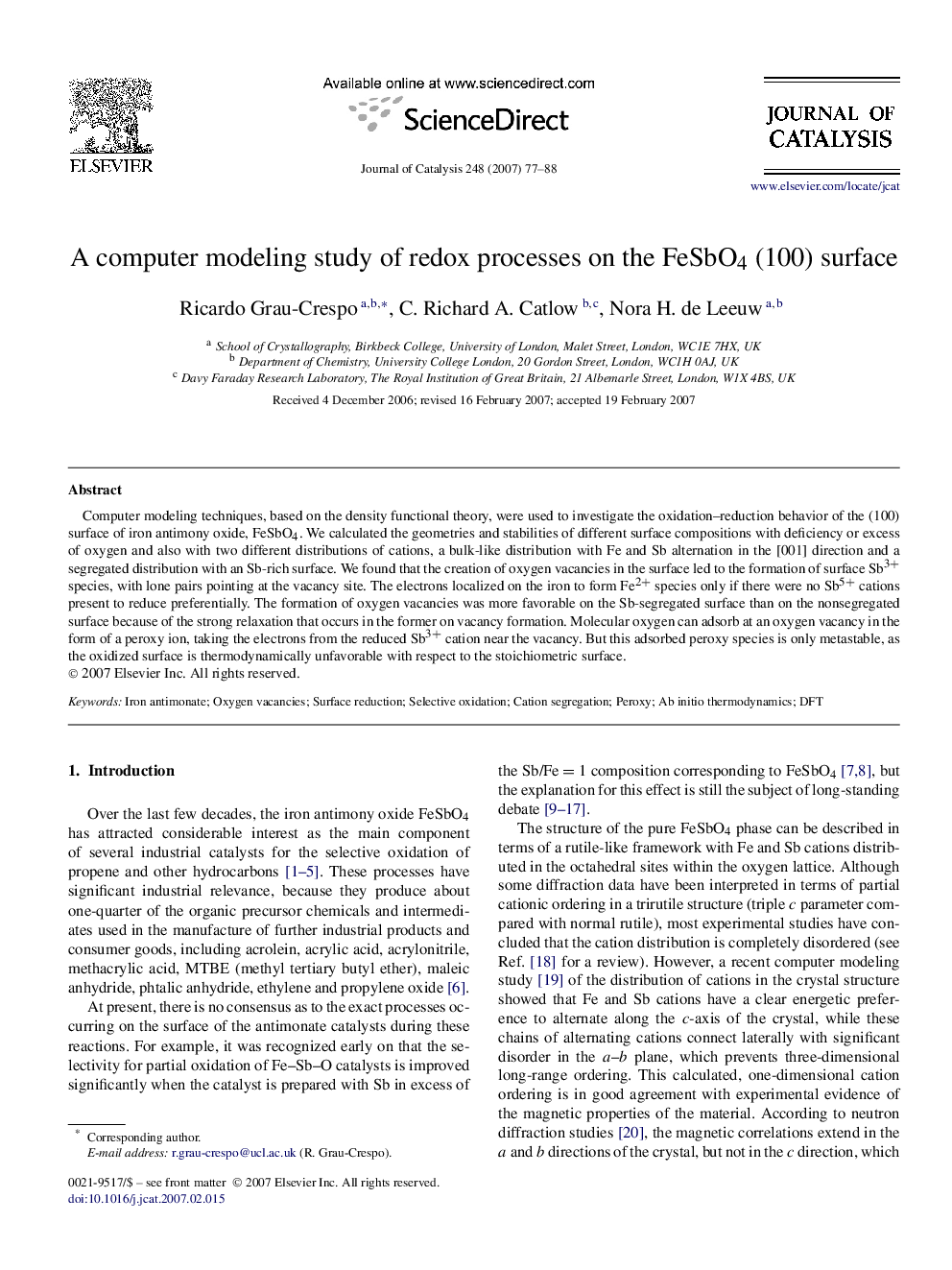| Article ID | Journal | Published Year | Pages | File Type |
|---|---|---|---|---|
| 62871 | Journal of Catalysis | 2007 | 12 Pages |
Computer modeling techniques, based on the density functional theory, were used to investigate the oxidation–reduction behavior of the (100) surface of iron antimony oxide, FeSbO4. We calculated the geometries and stabilities of different surface compositions with deficiency or excess of oxygen and also with two different distributions of cations, a bulk-like distribution with Fe and Sb alternation in the [001] direction and a segregated distribution with an Sb-rich surface. We found that the creation of oxygen vacancies in the surface led to the formation of surface Sb3+ species, with lone pairs pointing at the vacancy site. The electrons localized on the iron to form Fe2+ species only if there were no Sb5+ cations present to reduce preferentially. The formation of oxygen vacancies was more favorable on the Sb-segregated surface than on the nonsegregated surface because of the strong relaxation that occurs in the former on vacancy formation. Molecular oxygen can adsorb at an oxygen vacancy in the form of a peroxy ion, taking the electrons from the reduced Sb3+ cation near the vacancy. But this adsorbed peroxy species is only metastable, as the oxidized surface is thermodynamically unfavorable with respect to the stoichiometric surface.
